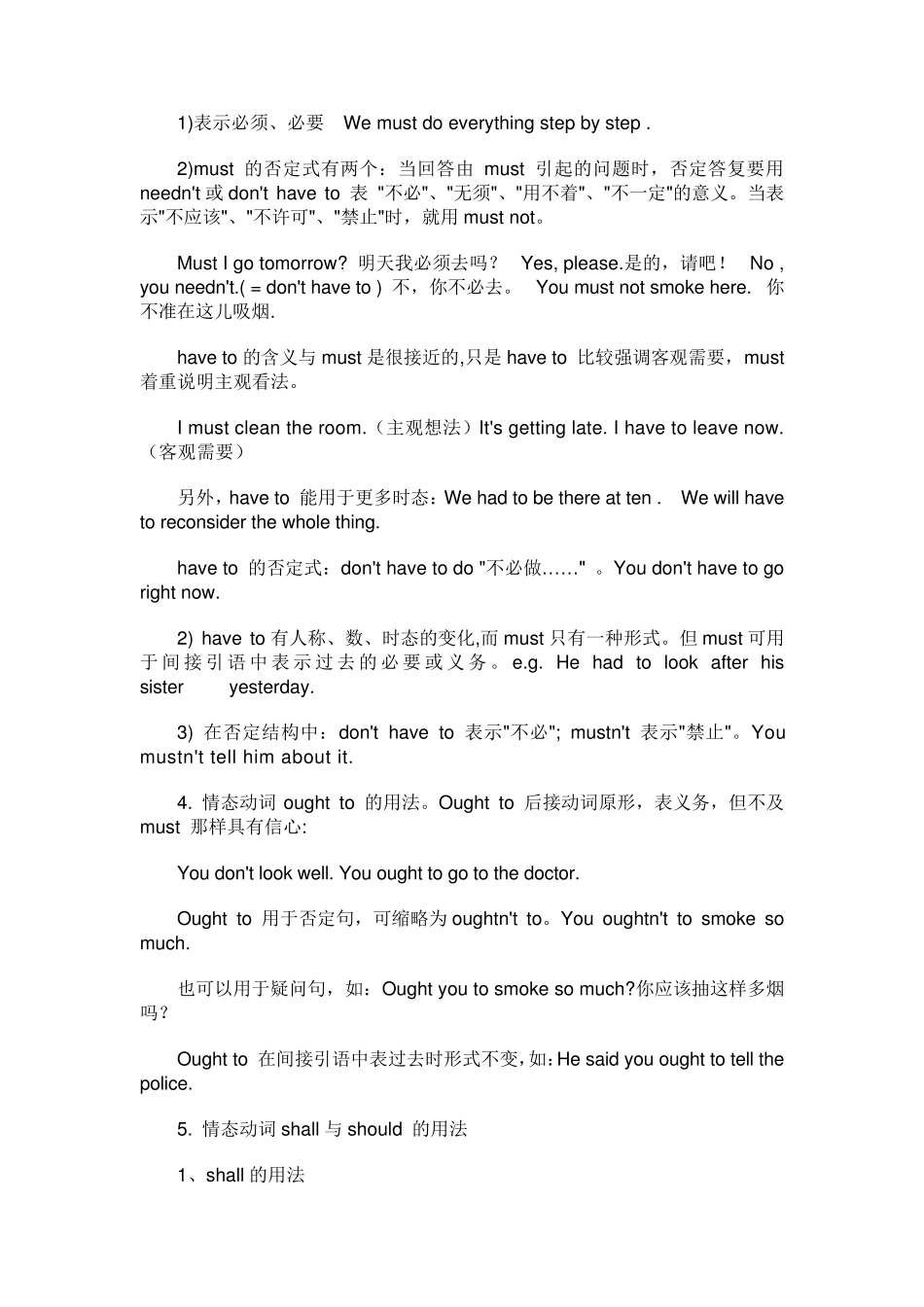情态动词的用法总结2 情态动词表示可能、必要、允许、愿望、猜测等意义,它们本身虽有一定词义,但不能独立用作谓语、也没有人称和数的区别,其后必有动词原形,共同构成复合谓语。 possibility: can / could, may / might certainty: must, will, should ability: can / could, be able to permission: can / could, may / might requests: can / could, will / would suggestions: could / may /might, shall necessity: must, have to, have got to, need advice: ought to, had better 语法特征 1. 情态动词没有人称和数的变化,即情态动词第三人称单数不加- s (have to, have got to, be able to 除外)。 2. 情态动词不能表示正在发生或已经发生的事情,只表示期待或估计某事的发生。 3. 情态动词本身具有一定词义,但不能单独做谓语, 后一般接动词原形一起构成谓语部分 (ought to, have to/have got to, be able to除外)。 4. 情态动词无非谓语形式,即无不定式、分词等形式。 1. can 和 be able to 1) can (could) 表示能力、可能, 只用于现在式和过去式 can 表能力时意味着凭体力或脑力或技术等可以做。I can climb this pole. He is only four , but he can read. Fire can't destroy gold. 因为 can 不能和其他助动词连用,所以表示将来式时用will be able to : You will be able to skate after practising it times. 2)表可能性 Can the news be true? It can't be true. What can he possibly mean? 3)表示允许(和 may意思相近)常见于口语。Can (May) I come in ? 我能进来吗?Can I smoke here ? could 表过去的能力、可能和许可,(间引) At that time we thought the story could not be true. 4) be able to 可以用于各种时态。只用 be able to 的情况:a. 位于助动词后。b. 情态动词后。c. 表示过去某时刻动作时。 d. 用于句首表示条件。 e. 表示成功地做了某事时,只能用 was/ were able to,不能用 could。 注意:could 不表示时态,只表示: 1) 提出委婉的请求,回答中不可用 could。 --- Could I have the television on? --- Yes, you can. / No, you can't. 2) 在否定、疑问句中表示推测或怀疑。 He...


